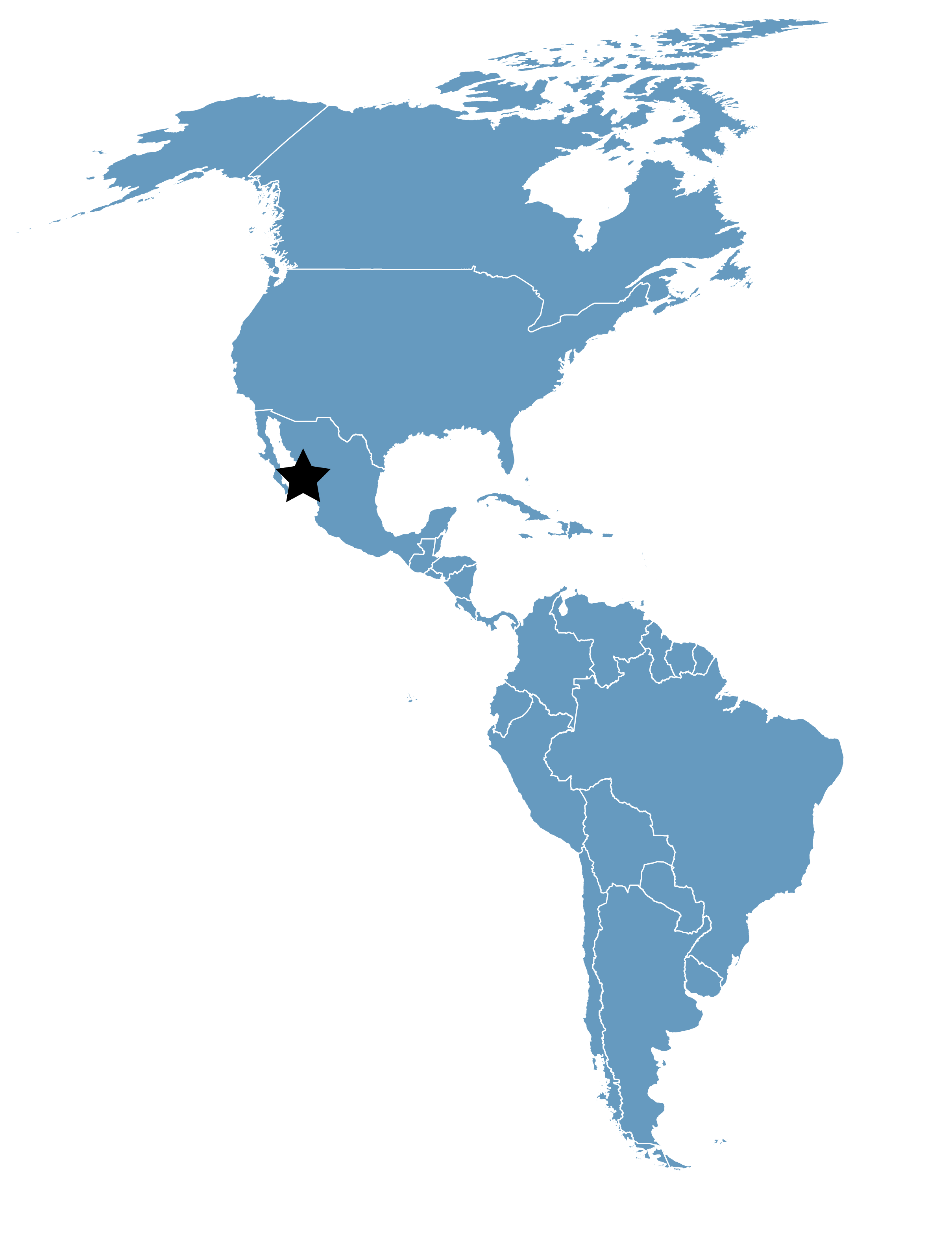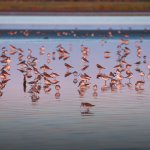Bahía de Santa María
Location
Sinaloa, Mexico
Category
Hemispheric
Basis for Designation
More than 500,000 shorebirds annually.
Size
53,140 hectares (131,311 acres)
Date Designated
August 2001
Site Owner
Federal
Overview
Bahía de Santa María contains a variety of habitats primarily consisting of mangrove vegetation with four different species of mangroves: buttonwood (Conocarpus erecta), red mangrove (Rhyzopha mangle), black mangrove (Avicennia germinans), and white mangrove (Laguncularia racemosa). Deciduous forest is present throughout the coastal strip and on many of the bay’s islands. It is also common to find patches of xerophytic and halophytic vegetation, as well as large areas with dunes and marshes. The whole bay is subject to tidal movements and influences, especially the wetlands, upon which the shorebirds primarily depend. In recent decades, however, human settlements and exploitative practices in the area have created conditions for extensive swamps.
Ecology and Conservation
Although the biological potential of the region is very high, diverse factors exist that threaten the zone, most importantly the significant increase in the human population in the region leading to an over-exploitation of natural resources. Fishing camps have caused a gradual deterioration of the aquatic flora and aquatic fauna. Specific problems include over-fishing, trash, improper fishing techniques, oil and gasoline pollution, and a lack of knowledge regarding resource management. Recently a large number of fish farms have been developed and installed, many of them without proper authorization. Because of the destruction of large tracts of land near bodies of water, the Bay has been affected in a negative way. The channels constructed to fill the fish ponds impede the ebb and flow of the tides leading to the death of mangroves and other halophytes. If this trend continues, it runs the risk of an ecological disaster. Agrochemicals and sewage deposited into the Bay also negatively affects the resources of the Bay, causing the progressive eutrophication of the zone.
The following issues are a priority: the restoration of wetlands destroyed by the fish farms that have since ceased their activities, monitoring fishing in general, and monitoring waste or discharge of water with chemicals from surrounding cities and agricultural areas.
Despite its biological richness, the area lacks a systematic study of flora and fauna, and there is no reliable inventory for prioritizing the conservation of resources.








